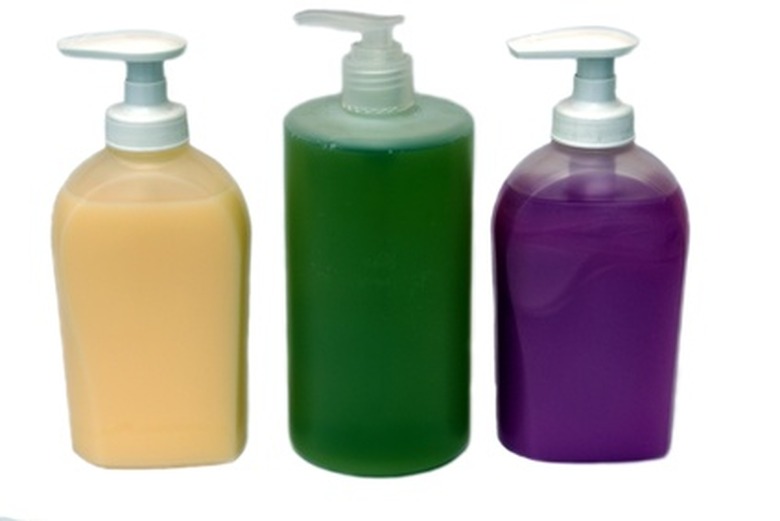Experiments With Hand Sanitizer
Hand sanitizers are marketed to kill most of the bacteria they come in contact with. Growing up, we expected doctors and nurses to be well-scrubbed, but today we are seeing more and more hand sanitizer dispensers at every day places like the grocery store and mall. There are experiments that help us understand how well hand sanitizers work and if they work better than soap.
Sanitizer vs Sanitizer
Sanitizer vs Sanitizer
One scientific experiment is to look at the effectiveness of each brand or type. For this experiment, compare sanitizers that contain alcohol against nonalcoholic sanitizers. Also, for comparison, use sanitizers that offer different amounts of alcohol in their products; most alcohol-based sanitizers use between 60 to 90 percent alcohol. For this experiment, you need five brands of hand sanitizer, five test subjects, cotton swabs, ten agar petri dishes and an incubator.
On your test subjects, take a control swab before applying any sanitizer. Apply to agar, and mark each dish as "Control" with the subjects' names. Then have each test subject clean his hands as directed by the sanitizers being tested. Swab again, and apply to the remaining petri dishes. Make sure each dish is marked with the appropriate sanitizer's name as well as the subject's name. Incubate for 48 hours. Count the number of bacterial colonies on all dishes. Compare the control and experimental groups to determine the percentage of decrease for bacterial colonies for each hand sanitizer.
Sanitizer vs Soap
Sanitizer vs Soap
This is similar to the Sanitizer vs Sanitizer experiment with one important change–you are comparing hand sanitizers to soap. Compare the effectiveness of the hand sanitizers used in the first experiment to that of soap. There are many types of soap on the market today including, bar, liquid, foam and antibacterial. Another twist that may be added to this experiment is including hand washing with no soap. Follow the same steps as in the first experience with all of your test subjects and chosen soap types.
Sanitizer vs Petri Dish
Sanitizer vs Petri Dish
This final experiment is simple and less time consuming, and it focuses on determining if hand sanitizer inhibits the growth of bacteria. It takes two petri dishes, two cotton swabs and a hand sanitizer of your choice. For the control group, swab the inside of your mouth, and rub it all over the petri dish. On your experimental petri dish, put a small amount of hand sanitizer in the middle. Swab the inside of your mouth, and then carefully apply the swab to the dish, starting around the sanitizer and then swabbing the middle taking care to not move the sanitizer to other areas of the dish. Incubate for 48 hours, and observe what happens.
References
- Selah School District, Washington: Effectiveness of Non-Alcohol Versus Alcohol-Based Hand Sanitizer
- Selah School District, Washington: Which Waterless Hand Sanitizer Is Most Effective in Killing Bacteria?
- Good Guide: What's in Hand Sanitizer?
- ABC News: "GMA" Tries Different types of Hand Sanitizer and Soap to See Which Works Best
Cite This Article
MLA
Carpenter, Michael E. "Experiments With Hand Sanitizer" sciencing.com, https://www.sciencing.com/experiments-hand-sanitizer-7455589/. 24 April 2017.
APA
Carpenter, Michael E. (2017, April 24). Experiments With Hand Sanitizer. sciencing.com. Retrieved from https://www.sciencing.com/experiments-hand-sanitizer-7455589/
Chicago
Carpenter, Michael E. Experiments With Hand Sanitizer last modified March 24, 2022. https://www.sciencing.com/experiments-hand-sanitizer-7455589/
